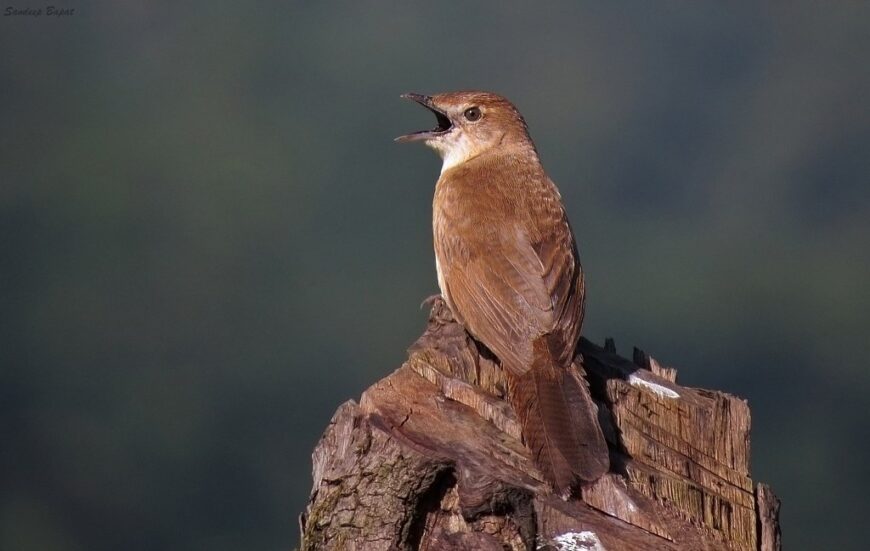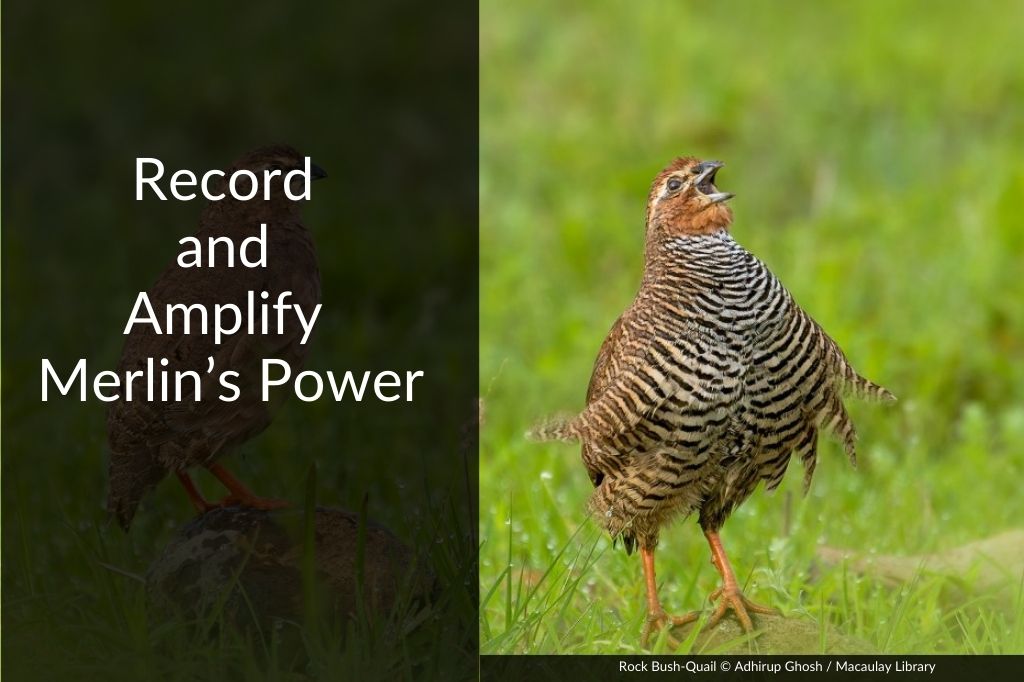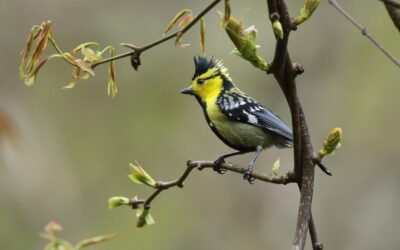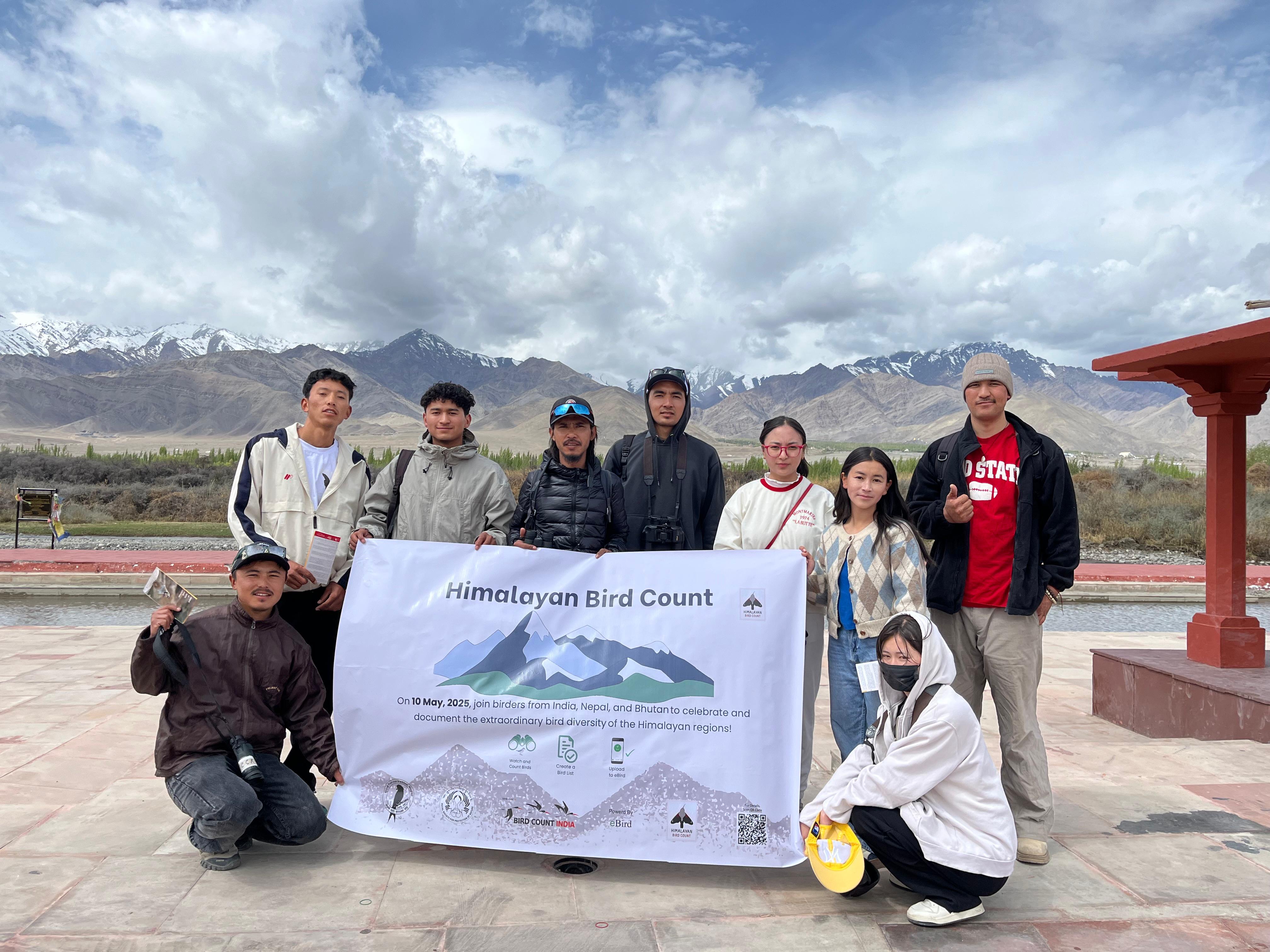Calling all birders: Contribute your sound recordings to amplify Merlin Sound ID!
We are seeking sound recordings of bird species found in Western India, specifically covering the states of Gujarat, Maharashtra, and Goa.
Merlin Bird ID app has revolutionised birdwatching by allowing bird-curious people to identify species based on their calls, songs, and images. We all know how useful the Merlin is in identifying photos; however, identifying the birds that make sounds around our neighbourhood can be a very gratifying experience for a general nature lover, and that is a powerful way to bring them closer to birds.
Merlin Sound ID is currently trending on social media in the United States, a country with a 100% bird coverage rate. Even those who have no connection to birds find this app ‘cool.’ Radio jockeys, running clubs, cyclists, trekkers, and morning walkers—how cool is it to just show your phone and get a list of birds that are singing! However, Indian species are under-represented in the app. This article outlines how birdwatchers can contribute to expanding Merlin’s coverage in India, more specifically Western India.
A trending video showing how Merlin is popular in the USA.
If the video doesn’t open, please click here.
Why Western India?
We plan to gradually scale up Merlin sound ID in distinct phases, each targeting specific geographic regions. To begin, we are seeking sound recordings of species found in Western India, specifically covering the states of Gujarat, Maharashtra, and Goa.
Why Your Recordings Matter
Your bird sound recordings will help improve Merlin’s accuracy in detecting species through vocalisations. Like images, Merlin needs hundreds of sound samples to “train” its system to recognise bird calls; the more recordings we collect, the better the app becomes.
All bird sound recordings uploaded to eBird are stored in the Macaulay Library archives, creating a valuable resource. Beyond documenting each observation, this expanding collection of bird sounds is a powerful tool for researchers and bird enthusiasts alike, helping to identify species and offering insights into bird communication, behaviour, and distribution patterns.

Broad-tailed Grassbird Schoenicola platyurus © Sandeep Bapat / Macaulay Library
How to Contribute
- The best way to contribute your bird sound recordings is by uploading them to your eBird checklists.
- To effectively train Merlin to identify a species, we need over 100 recordings for each focal species. See Table 1 for species that currently have a limited number of recordings in eBird/Macaulay Library.
- Ensure high-quality recordings; however, even low-quality ones are helpful.
- Sound recordings can be done through smartphones or existing cameras.
- For guidance on how to record and prepare your audio files before uploading, check out the resources given below.
Table 1. List of species that require sound recordings (sorted by priority)
| Species | No. of audio recordings needed |
| White-browed Bushchat | 98 |
| Laggar Falcon | 97 |
| Knob-billed Duck | 95 |
| Yellow-legged Buttonquail | 89 |
| Painted Sandgrouse | 89 |
| Indian Spotted Creeper | 83 |
| Black-backed Dwarf-Kingfisher | 78 |
| Hypocolius | 74 |
| Orange-breasted Green-Pigeon | 73 |
| Small Buttonquail | 69 |
| Asian Desert Warbler | 66 |
| Striolated Bunting | 63 |
| Cotton Pygmy-Goose | 63 |
| Black-capped Kingfisher | 63 |
| Black-throated Munia | 61 |
| Isabelline Shrike | 58 |
| White-bellied Minivet | 58 |
| Dusky Crag-Martin | 58 |
| Malabar Starling | 54 |
| Greater Hoopoe-Lark | 52 |
| Bank Myna | 51 |
| Yellow-footed Green-Pigeon | 50 |
| Blue-faced Malkoha | 49 |
| Rock Bush-Quail | 48 |
| Forest Owlet | 46 |
| Broad-tailed Grassbird | 46 |
| Vigors’s Sunbird | 46 |
| Malabar Imperial-Pigeon | 45 |
| Common Flameback | 42 |
| Indian Nuthatch | 40 |
| Black-breasted Weaver | 40 |
| Demoiselle Crane | 39 |
| Painted Spurfowl | 38 |
| White-bellied Blue Flycatcher | 35 |
| Sirkeer Malkoha | 34 |
| Brown Crake | 33 |
| Great Thick-knee | 33 |
| Little Stint | 31 |
| Pin-tailed Snipe | 26 |
| Sulphur-bellied Warbler | 23 |
| Siberian Stonechat | 21 |
| Brown Fish-Owl | 20 |
| Sand Lark | 20 |
| River Lapwing | 17 |
| Temminck’s Stint | 17 |
| Crested Bunting | 17 |
| Yellow-crowned Woodpecker | 16 |
| Crested Treeswift | 14 |
| Short-toed Snake-Eagle | 14 |
| Tickell’s Thrush | 14 |
| Chestnut-bellied Sandgrouse | 13 |
| Eastern Orphean Warbler | 13 |
| Marsh Sandpiper | 12 |
| Red Collared-Dove | 11 |
| Long-billed Pipit | 11 |
| Bar-headed Goose | 10 |
| Heart-spotted Woodpecker | 8 |
| Malabar Woodshrike | 6 |
| Indian Yellow Tit | 6 |
| Tytler’s Leaf Warbler | 6 |
| Grey-fronted Green-Pigeon | 5 |
| Forest Wagtail | 5 |
| Tawny Lark | 4 |
| Oriental Pratincole | 2 |
Note: Although this phase focusses on species found in Western India, we encourage birders to record them wherever they encounter them across India.
Here is a recent webinar recording on Tips to record, prepare and upload bird sound recordings to your eBird checklists!
Resources
- Explore sound recording tips here.
- Check out smart phone recording tips here.
- See guidelines to prepare your sound recordings before uploading to eBird.
- We highly recommend using OcenAudio for editing your sound recordings.
Join us in this journey by uploading your bird sounds today and helping make Merlin the ultimate bird call expert!
For more information, please visit the Merlin Sound ID Project.
For comments, questions, or assistance with Sound ID, please email us at skimmer@birdcount.in or WhatsApp: +91 90081 96098
Header Image: Rock Bush-Quail Perdicula argoondah © Adhirup Ghosh / Macaulay Library




